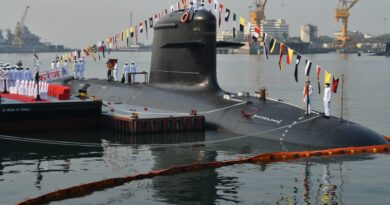Atal Tunnel
Atal Tunnel (also known as Rohtang Tunnel) is a highway tunnel built under the Rohtang Pass in the eastern Pir Panjal range of the Himalayas on the Leh-Manali Highway in Himachal Pradesh, India. At a length of 9.02 km, it is the longest tunnel above 10,000 feet (3,048 m) in the world and is named after former Prime Minister of India, Atal Bihari Vajpayee
Significance of Atal Tunnel:
- All year Connectivity: The Atal tunnel is the first step towards all-year connectivity to Ladakh. The tunnel has the potential to link Ladakh to Manali and Chandigarh throughout the year, as it would bypass Rohtang Pass, which is snowed in through the winter months.
- Strategic: The tunnel provides a strategic advantage to the country’s armed forces by providing year-long connectivity to border areas. It will save an entire day for troops and supplies as they move towards forward posts.
- Avail Basic Facilities: The residents of Ladakh who had to face immense hardship to avail even basic facilities like healthcare and food supplies will now be able to reach Manali and connect with the rest of the country using this new tunnel. Essential commodities like petrol and vegetable supplies would also likely be available throughout the year.
- Boon for Farmers: The drop in travel time will help many, especially farmers whose precious crops like peas and potatoes will no longer rot in trucks before reaching the market.
- Boost to Tourism: Livelihoods in the tourism sector of the residents in Lahaul Valley and Ladakh would get a boost.
Challenges
The most challenging task was to continue the excavation during heavy snowfall in winter. Excavation for tunnelling was done from both ends. However, as Rohtang pass closes during the winter, the north portal was not accessible during winter and the excavation was being done only from the south portal in winters. Only about one-fourth of the entire tunnel was excavated from the north end and three-fourths was excavated from the south end. There were more than 46 avalanche sites on approaches to the tunnel Other challenges to the progress of the tunnel included difficulties in disposing more than 8 lakh m³ of excavated rock and soil, heavy ingress of water (as much as 30 lakh litres per day in June 2012) that required constant dewatering, costlier treatment and slowed the progress of excavation from 5-metre per day to just half a metre a day and unstable rocks that slowed blasting and digging. A cloud-burst and flash flood on 8 August 2003 killed 42 labourers who were building the temporary access road. Questions were also raised on the impact of cutting down more than 700 trees on the ecology



